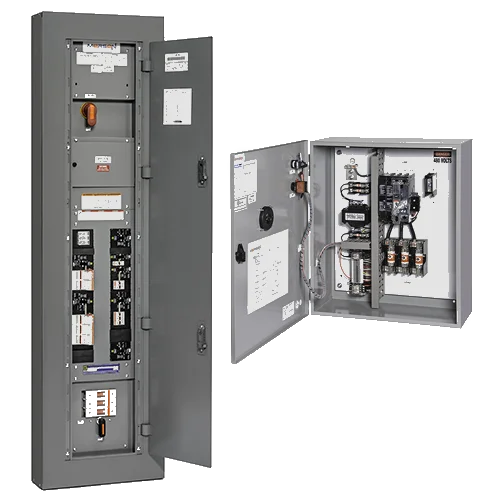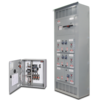Engineered Panels
-
Fused Coordination Panelboards
Mersen’s Fused Coordination Panelboard is designed to meet requirements defined by the National Electrical Code (NEC) to protect critical power operations. These panels are provided with a default short circuit current rating (SCCR) of 200kA and provide overcurrent protection through a combination of a circuit breaker and a fuse. The circuit breaker is designed to operate on overloads up to 2 times their rating and the fuse over 2 times up to 200kA. Mersen’s Fused Coordination Panelboard can simplify the process in achieving code compliance for designers.
The MFCP Configurator lets Mersen partners design your own custom-configured Fused Coordination Panelboard by selecting the ratings, features, and options you want via a graphical interface. The MFCP Configurator will also provide a quote and download a PDF of the configured job. Mersen engineers will also work with you to design a solution that fits your requirements.
Access to the MFCP Configurator is by a separate user name and login from the login used to access ep.mersen.com. For access to the MFCP Configurator, please contact your Mersen Regional Manager.
Click to go to the login page for the MFCP Configurator.
-
Fusible Shunt Trip Disconnect
Mersen’s fusible shunt trip switch is a UL Listed industrial control panel offering remote load-break disconnection capability to emergency circuits. An array of available options allows for maximum functionality to be built into a single compact panel. Panels built for elevator applications feature control transformers (fusing both primary and secondary sides), a fire safety interface relay with a fire alarm voltage monitoring relay, and mechanically interlocked auxiliary contacts. Use of Mersen’s Amp-Trap 2000® AJT Class J fuses permits easy selective coordination, while providing the panel and its components with superior current limitation and the ability to withstand high fault conditions. AJT fuses provide added system reliability since no maintenance or periodic testing is required as with other electromechanical overcurrent devices.


